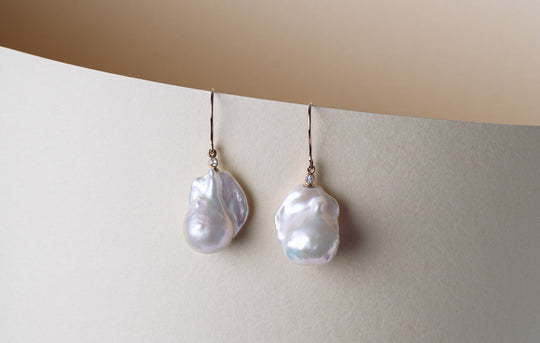
Pearls are available in different sizes, shapes, and colours, telling the tale of origin, quality, and rarity. Originally written in 2206 BC by a Chinese historian, pearls are unparalleled in elegance and prestige in today’s modern lifestyle.
This blog post will cover the topic, Determining the Quality of Pearls: An Insight into Pearl Jewellery, explaining what pearls are, the quality factors, and taking care of pearl jewellery for optimal longevity. Explore the sophisticated look of pearls at a price point you will love, along with a care guide that is easy to follow.
Pearls: Treasures from the Sea
Pearls are mistakenly called stones, but they are not stones; they are considered precious gems and are composed of calcium carbonate. Pearls are organic materials and are grouped along with coral, ivory/bone, and amber.
Pearls form around an irritant in the bodies of mollusks in both saltwater and freshwater seas. This process occurs naturally (natural pearls) or deliberately (cultured pearls) during a man-made insertion of a bead within the mollusk (GIA). The terms cultured pearls and natural pearls should be notated during the sale of any pearl jewellery.
Varieties such as Tahitian, Akoya, and freshwater black pearls are popular with pearl enthusiasts, presenting an elegant array of greens (peacock), purples (aubergine), greys, and inky dark natural or enhanced colours for those who have a glamorous style palette. We are pleased to offer high-grade freshwater pearls, Japanese Akoya pearls, and Freshwater Akoya pearls for the discerning customer who truly adores pearls and the innate beauty they possess.
Pearl Quality Factors
According to GIA, pearls are graded depending on certain factors that ultimately determine the quality of the pearl. These factors are as follows:
Lustre: The reflection of light from the surface. Pearls should have a high lustre, glossy appearance. A dull surface diminishes the overall beauty of the pearl.
Surface Quality: Dents and scratches to the pearl’s surface give the pearl a less-than-pristine look. Higher-quality pearls have little to no blemishes.
Nacre Thickness: A thick nacre gives the pearl durability and wearability, allowing it to withstand years of enjoyment. Akoya pearls commonly feature thinner nacres, with South Sea pearls the thickest.
Size: Pearls come in an abundance of sizes from very small “mini” sizes drill set in clusters to extra large statement-worthy sizes.
Shape: Round or spherical pearls are the most popular pearl type. They should be symmetrical, even on all sides. It is important to note pearls come in different free-form shapes (baroque), making each pearl a truly unique gem to own, exhibiting its intriguing formation and origin.
Colour: Pearls are synonymous with white, off-white, and other light cream colours. However, they also offer an exciting rainbow of enticing hues, either natural or intentionally dyed (deep purples, bright pinks, luscious greens, and more) to achieve a richer shade.
*If there is more than one pearl (such as on a bracelet or necklace strand) matching is taken into consideration. All pearls must be in a uniform row of matching colour and size/diameter, creating the most appealing pearl strand.
Taking Care of Pearl Jewellery
Pearls rate 2.50-3 (out of 10) on the Mohs hardness scale, making them extremely soft. Pearl jewellery should be wiped with a very dry cloth or jewellery cloth, removing bacteria and debris from the surface. Do not place your pearl jewellery into an ultrasonic or liquid jewellery cleaner–this will permanently destroy the pearl.
Placing pearls on AFTER makeup, lotion, and fragrance will help keep them from collecting residue. Removing any pearl jewellery first when you get home will keep it from getting tangled or damaged. Pearl jewellery should not be exposed to water (pools, showers, or sea), harsh chemicals, or slept in.
Restringing pearls periodically will keep them secure if they are on a cord strand. Pearls should be stored away from other jewellery, in their own separate box or bag–other gemstones and metal could easily scratch the pearls. Treating your pearl jewellery with kindness at all times will help keep it looking its best.


0 comments